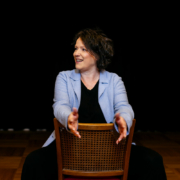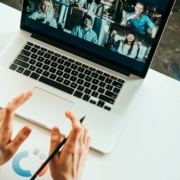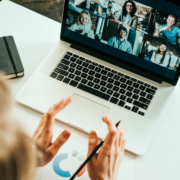In my February blog I mentioned that I was planning a trip to Greenland.
I’d been dreaming about this for many years and I have to say, I’m really not sure where this desire originally came from. But I believe it was based on a romantic idea of the landscape, the culture and the life of the Inuit.
Of course, the dream included admiring Greenland’s certainly impressive snow-covered landscape, including the glaciers, but also very specific plans such as snowmobile tours, hiking on the inland ice, dog sledding and even staying overnight in an original igloo.
No sooner said than done. I had just gone through a challenging time both professionally and personally and rewarded myself with the fulfillment of this dream. A week in Ilulissat. By myself. No travel companion, no tour group. Just me, myself and I.
I started dreaming about this trip to Greenland before I was diagnosed with cancer and before all the treatments and side effects. I was fit as a fiddle, very athletic and felt strong, both physically and mentally. Now, many years later, when I set out planning the trip and all the things I wanted it to include, I was totally excited and started booking the various items on my bucket list one by one. I happily packed all the things and equipment I thought I’d need and set off.
When I arrived in Greenland – all its roads covered in ice and snow, traveling in small, cramped propeller planes, with daytime temperatures sometimes as low as minus 27 degrees Celsius – I quickly realized that I might have been fit as a fiddle many years ago. But today? I immediately reached my physical limits. My backpack felt far too heavy. On my first longer hike, where I was sometimes knee-deep in snow, I had to deal with balance problems, due to my polyneuropathy in my feet and thereby an already unsteady gait, along with muscle cramps.
The first mental doubts followed: What on earth had possessed me to undertake this crazy journey? How could I have overestimated myself and my strength so much? And to take this trip all by myself? With no one at my side who was aware of my personal fears and doubts?!
What was I going to do? How was I going to manage the treks? The weight of my backpack? The snowmobile tour? And how in the world would I get through the cold threshold into the igloo, which felt far too small, and get out again in the morning? With my morning balance problems, significant and consistent muscle cramps and, most of all, the panic I have in small spaces? Should I stay in my room for a week and read books? Had I come all this way for that?
I have no one to blame but myself. You may be thinking that right now. And you’d be right.
So what to do?
Giving up was not an option for me. That was never my way. So, I came up with a new strategy:
Break my goals down into smaller steps. I didn’t look at the whole week all at once, but one day at a time, one action at a time. Each action I successfully completed was added to my “Great. I did it. ME.” record. You can’t imagine how good that felt.
When I had periods of weakness, I just stood still. For as long as it took. And enjoyed the scenery, the impressions, or had long conversations with locals or other tourists. These welcome breaks did me a lot of good, and I was able to not only recharge my batteries, but exchange ideas and broaden and deepen my impressions, too. I even made some great contacts and exchanged addresses for future trips. It was wonderful! By the way, this method automatically helped me to slow down, too.
I also did something truly crazy: I asked strangers for help. WOW! It wasn’t hard at all. Whether I was asking people to help me put on my spikes or something else, I just went up to strangers and asked them. It was really easy and I didn’t feel weak at all. On the contrary. And again, wonderful conversations ensued and even the opportunity to offer help in return because of course, other travelers have their own challenges to overcome.
This also made me realize that it’s not just me who has challenges and even fears in my own little universe, or who feels trapped in a tunnel, but that much younger and fitter travelers can have their own issues and need help, too. This surprised me at times and really helped me see things more clearly. I often thought to myself: “Really? You too…?” So we joined forces. Each of us with our own skills, and together, complementing each other and trusting in each other, we were strong.
And in the end, I realized something that I took home with me:
There were times when I was simply too tired to push my personal limits. Out of sheer exhaustion, I simply turned off my head and did it. Just did it. And guess what? It went beautifully and smoothly. It occurred to me that maybe my subconscious mind didn’t even know I had a handicap, and didn’t see any limitations.
What if the body didn’t even know what it couldn’t do anymore? What if it was just performing from memory? Just “did it”?
It actually worked. The less attention I paid to my limitations and worries, the more smoothly things went.
I simply didn’t let my body know what wasn’t possible.
Of course, I know that doesn’t always work, not with all limitations. And I was definitely a little awkward and stiff. But I’ve decided to turn off my head more often from now on, to follow my intuition and trust my unconscious processes.
Don’t tell yourself what you can’t do. As long as your intuition is convinced that it will work, it will work!
So: What is your long overdue and unfulfilled dream?
Go for it,
Your Crisis Manager










 Adobe Stock © Alex from the Rock
Adobe Stock © Alex from the Rock